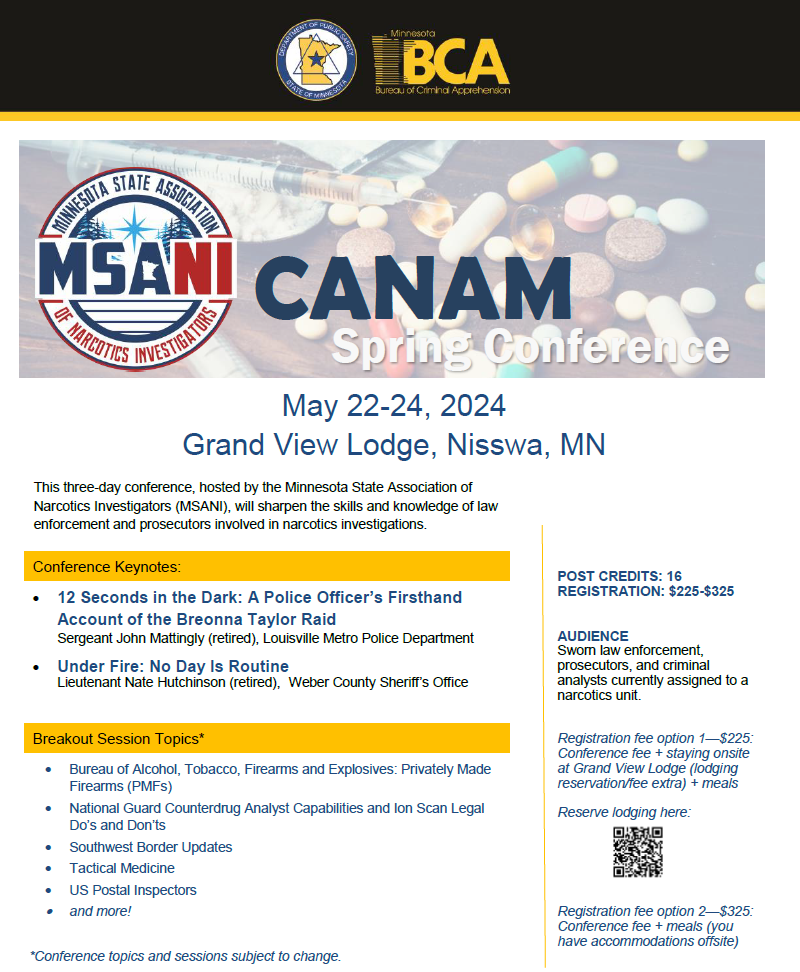https://training.northcentralhidta.org/default.aspx?menuitemid=96&menugroup=Training
All posts by admin
CanAm 2025 Sponsors
MSANI would like to thank the following 2025 Conference Vendors:
- Lens Equipment
- Detectachem
- Covert Track, a 3SI Company
- Glock Inc.
- North Central HIDTA
- Alex Pro Firearms
- Vortex Optics
- Skydio
- ALPHA Training, Tactics, and Sales
- Ensurity GPS
- RJ Wagner Marketing Inc. / Point Blank Enterprises
Sponsors:
- Midwest Machinery
- Schell’s Brewery
- Federal Ammunition
- Drip Drop
- Johnson Brothers
- MN Bureau of Criminal Apprehension (BCA)
- MCTC
- MN National Guard Counterdrug Program
Past sponsors:
CanAm Lodging
Lodging is now available!
TF Commanders: Click here to reserve cabin lodging at Grand View Lodge
Individuals: Click here to reserve lodging at Grand View Lodge
CanAm 2025
Dates: May 21-23, 2025
Grand View Resort, Nisswa, MN
Minnesota Marijuana Hospital-Treated Poisonings for Children Under 4 Increased by 733% Over the Past Six Years
Rural Patrol Drug Interdiction
Monday, May 12 – Wednesday, May 14, 2025, Duluth, MN
The Midwest Counterdrug Training Center focuses National Guard capabilities and assets to facilitate professional development, mitigate training gaps, and increase counterdrug expertise in the LEA and CBO communities in order to build safe and strong communities
Flier: http://msani.org/wp-content/uploads/2024/10/5-12-2025-Rural-Patrol-Drug-Interdiction.pdf
CanAm Agenda Published!
Registered users can see the full agenda here: 2024 CanAm Agenda
Recriminalizing drugs; Oregon offers a cautionary tale
CanAm 2024

CanAm 2024 Registration is Live!
Registration for Lodging and Conference are live today.
BOTH are necessary for attendance; Lodging is through Grand View and the Conference/Training registration is through BCA.